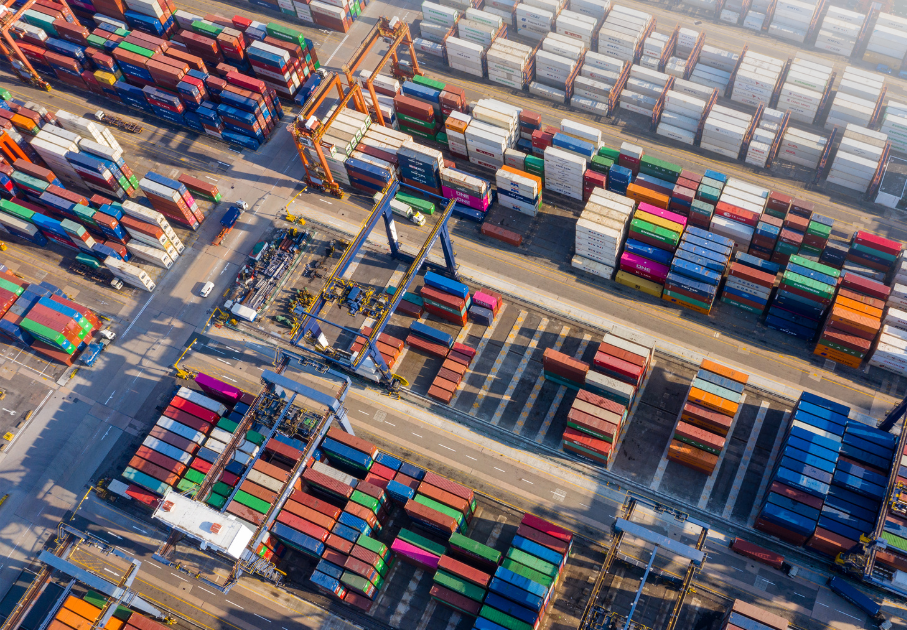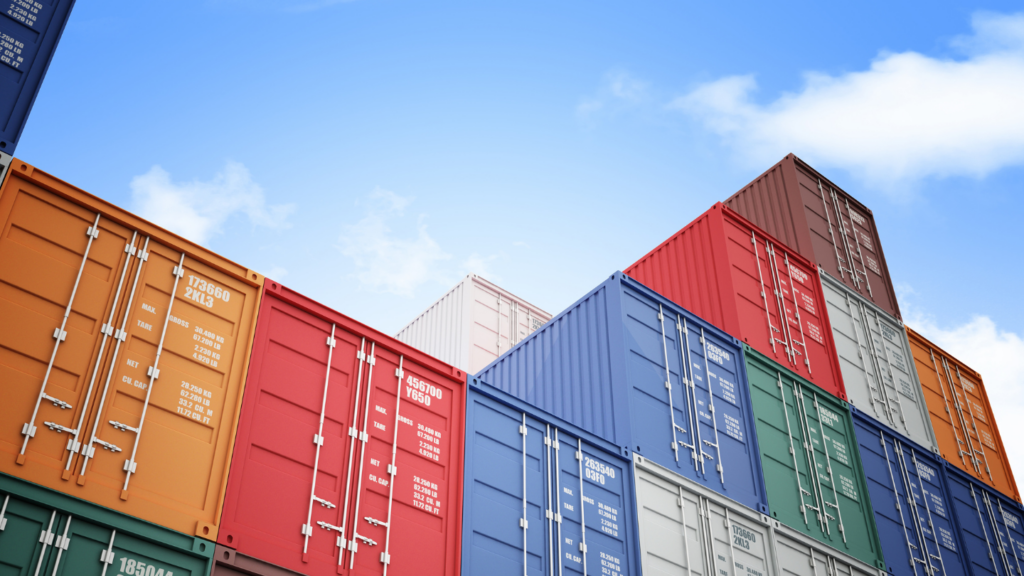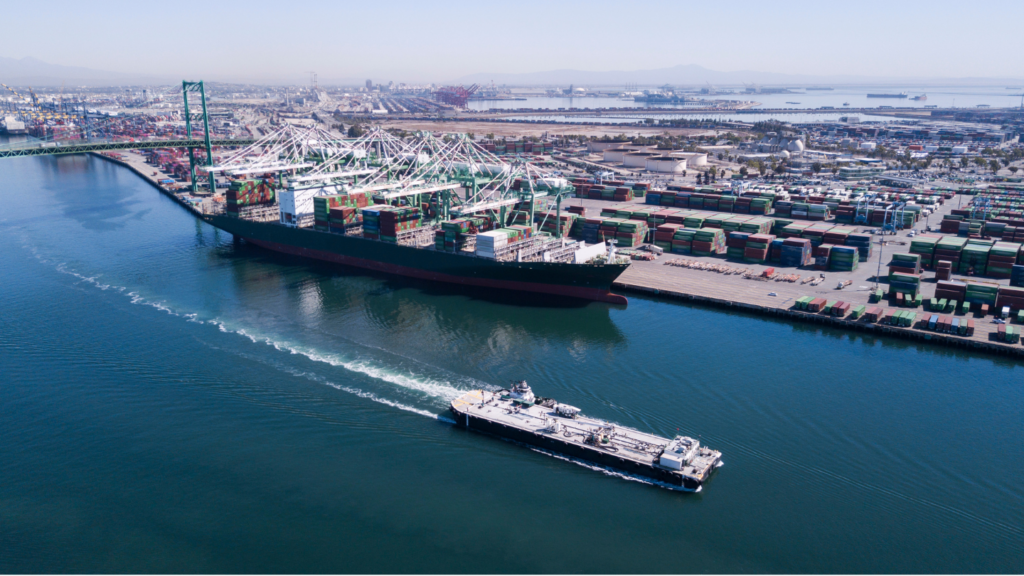Too Far Down, Q3 Up, and Ratification Required.
Your weekly All-Ways round-up of supply chain news.
Too Low
Falling rates in Asia may not be a good thing.
While exporters have been enjoying the lowered rates after 3 years of chaos, problems occur when rates drop too much. In the past, when rates fell to unsustainable levels for ocean carriers to break even, containers were left at the dock, and service levels fell too.
According to S&P Global Commodity Insights, container spot rates from the US West Coast to Asia were at $1,150 per FEU in early May, down more than 40% from the same period last year. Mid-June, rated were at around $500 per FEU. Some major shippers are even reporting rates lower than $250!
Ocean carriers want more export business so that it’s more equal to the imports they’re doing. Asia to US West Coast is at $1,200 per FEU.
It’s Going Down
There’s less export volume altogether. Stuart Sandlin, Hapag-Lloyd’s president for North America said there’s 5% less export volume this year than last year.
A strong US dollar, Chinese tariffs, and agricultural competition is the cause of the static outbound volumes from the US to Asia in recent years. As the Ocean Shipping Reform Act of 2022 (OSRA-22) was in the works last year, some US agricultural shippers brazenly told US legislators that if not for container lines refusing their cargo, they would have exported more.
According to PIERS, US agricultural export only went up 0.3% annually over a five-year period ending in 2022. During that time, paper and forest products export fell 2% and recyclable exports fell 10.2%. Chemical exports, on the other hand, rose 4.3%.
No growth in a market where profit is shrinking means that are trying to cut rising operational costs.
But on top of that, the Federal Maritime Commission (FMC) announced on June 14 its intention to tighten the regulations surrounding what constitutes unreasonable refusal of service. It might become mandatory for carriers to issue export policy documentation.
“We’re trying to set forth the elements that would be used to describe whether there's a violation and set, for example, some guardrails to attend to the final provision,” FMC Managing Director Lucy Marvin stated. “It doesn’t need to be totally prescriptive. You do want to enable the public to come to us and adjudicate their cases on a case-by-case basis.”
Rebound Possible
On North-South trade lanes connecting North America with Central and South America, it’ll likely take another 2-4 months for container demand and pricing to pick back up. Although spot rates have been at their lowest in the last 5 years, Carlos Fuchs, director of forwarder Royal Cargo based in Brazil, believes it will remain stable for the next 2 months.
“High inventory levels held in the US over the last two years should have cleared this year and firms and consumers should start buying more from Latin America,” said Fuchs.
From Brazil to the East Coast of North America, excluding transshipment cargo from Paraguay and Uruguay, average monthly volumes fell about 5,000 TEUs from the same quarter last year.
However, there has been a rise in scheduled container ship capacity between Brazil and the United States attributed in part to a new service launched in Q1.
Spot rates on the trade have continued to drop as a result. Numbers have been slashed by nearly half in June compared to May.
Declining Rates
For June bookings, all-in spot rates were at $1,715 per FEU (basic freight cost plus bunker surcharge and carrier security fee) on the benchmark Santos-New York route. They were at around $3,500 per FEU in May, $5,000 per FEU in April, and $10,000 per FEU last June. Santos-New York rares haven’t been this low since 2018.
Container spot rates to some places on the US East Coast are even lower, at about $1,100 per FEU said Maria Luisa Gonçalves, ocean export pricing leader at Royal Cargo do Brazil. These numbers can be attributed to many factors “such as trade agreements, tariff barriers, currency fluctuations, trade regulations, and government policies.”
Port Patterns
Cargo volumes from the Latin America trades have shifted to ports like Miami and Savannah leading to new services being launched out of those ports. And the cargo doesn’t seem to be switching back.
Although total Latin American trade volumes slipped 3% year over year to 303,935 TEUs in 2022, it’s still far away from the 257,262 TEUs in 2018. During the same period, there has been a 58% jump in shipments of perishables to and from Latin America, and is expected to continue with more services being added.
The US Southeast, amongst other regions, is benefiting from Latin America’s increased demand for fresh produce and other perishables, and a rapidly growing population. According to PIERS, refrigerated containerized imports from 2020 to 2022 rose 23.5% in comparison to the 11.6% national growth rate during the same period.
Transiphment ports in Panama are also benefitting from the increase in cargo.
Tentative Deal
Last week saw an intense period of time for the ILWU and PMA.
There was a self-imposed 72 hours to reach an agreement before employers coastwide would begin lockouts or strikes. At the same time, job actions were taking place up and down the coast.
US Labor Secretary nominee Julie Su flew out to California to help facilitate a deal and remained there until an agreement was reached.
Ports are now running as usual.
Contract Terms
A 32% salary increase over the lifetime of the contract was secured for West Coast longshore workers. In the first year, workers will receive a $4.62-per-hour wage increase followed by a $2 increase for the remainder of the contract. The wage increase will be paid retroactively to the expiry date of the last contract.
On top of that, a $70 million bonus will be divided equally amongst ILWU members for their hard work during the pandemic.
This wage increase is a big jump from the usual $0.50-$1.50 per year awarded by the PMA.
However, they didn’t lock in the extra manning requested for certain cargo-handling equipment at conventional terminals.
The ratification process has now begun. Every organization will have a discussion between its leaders and members. Once that’s complete, the PMA and the ILWU will vote to ratify the deal. This process usually takes three months which means the deal won’t be finalized until early fall.




